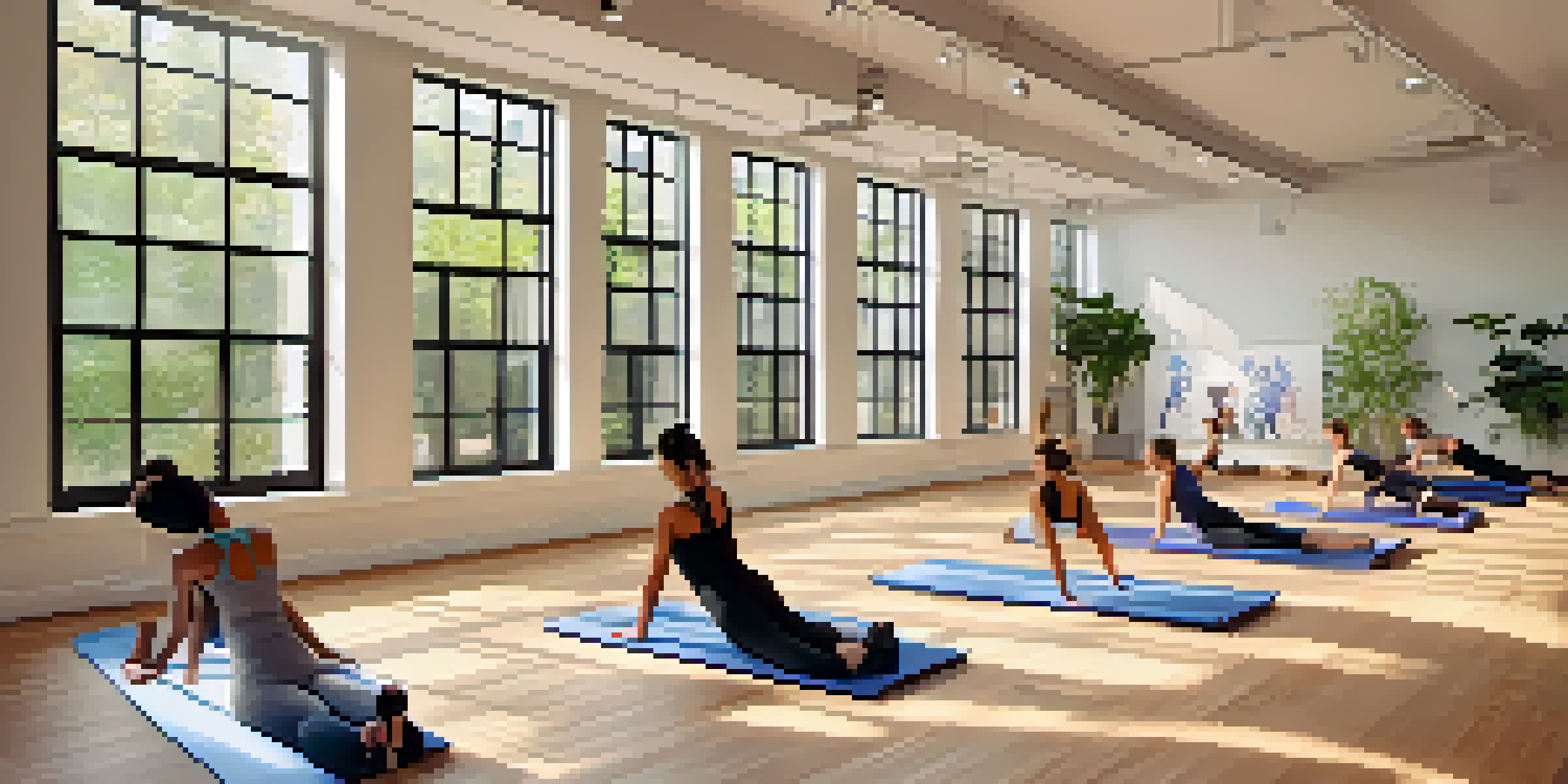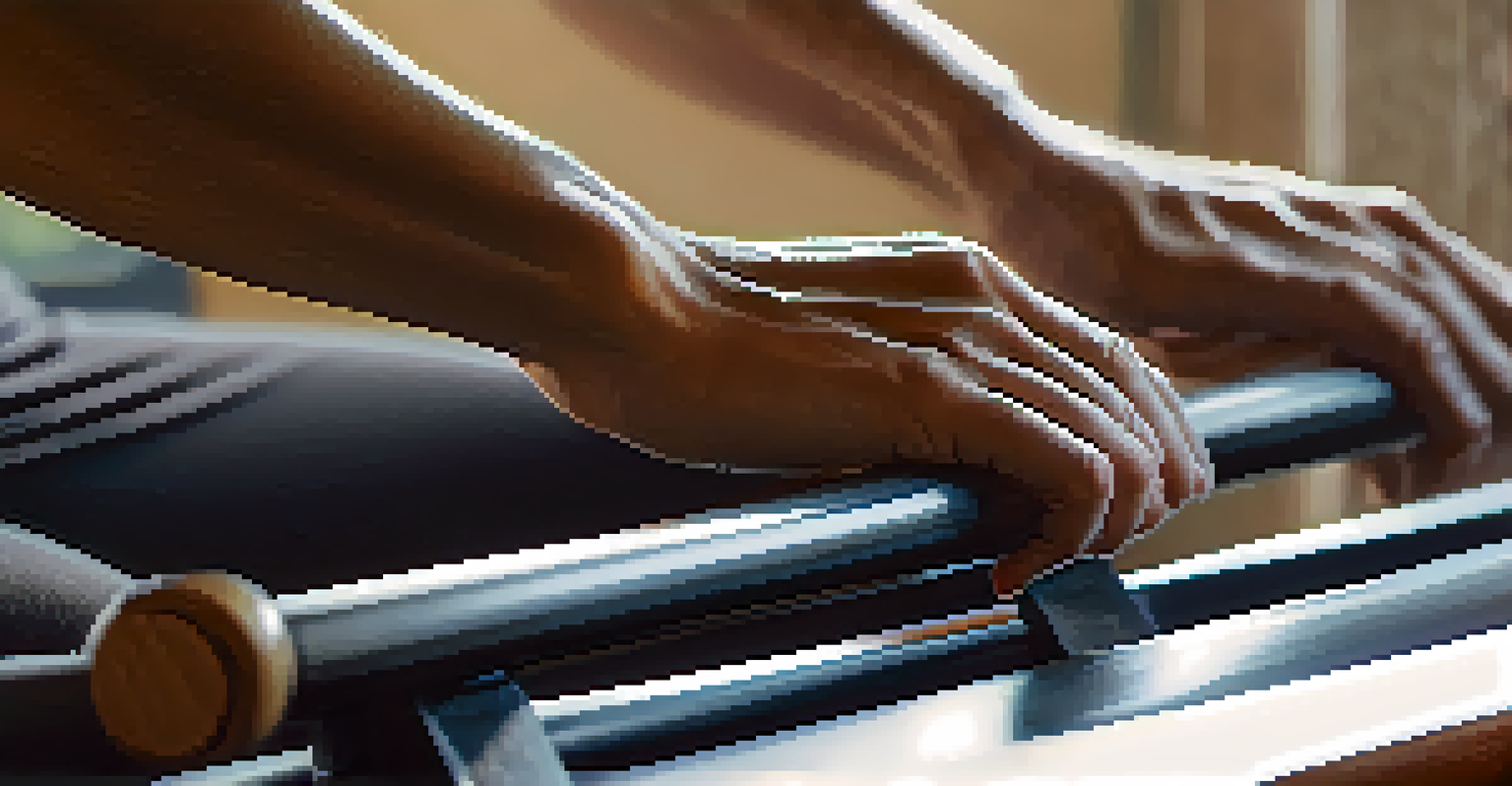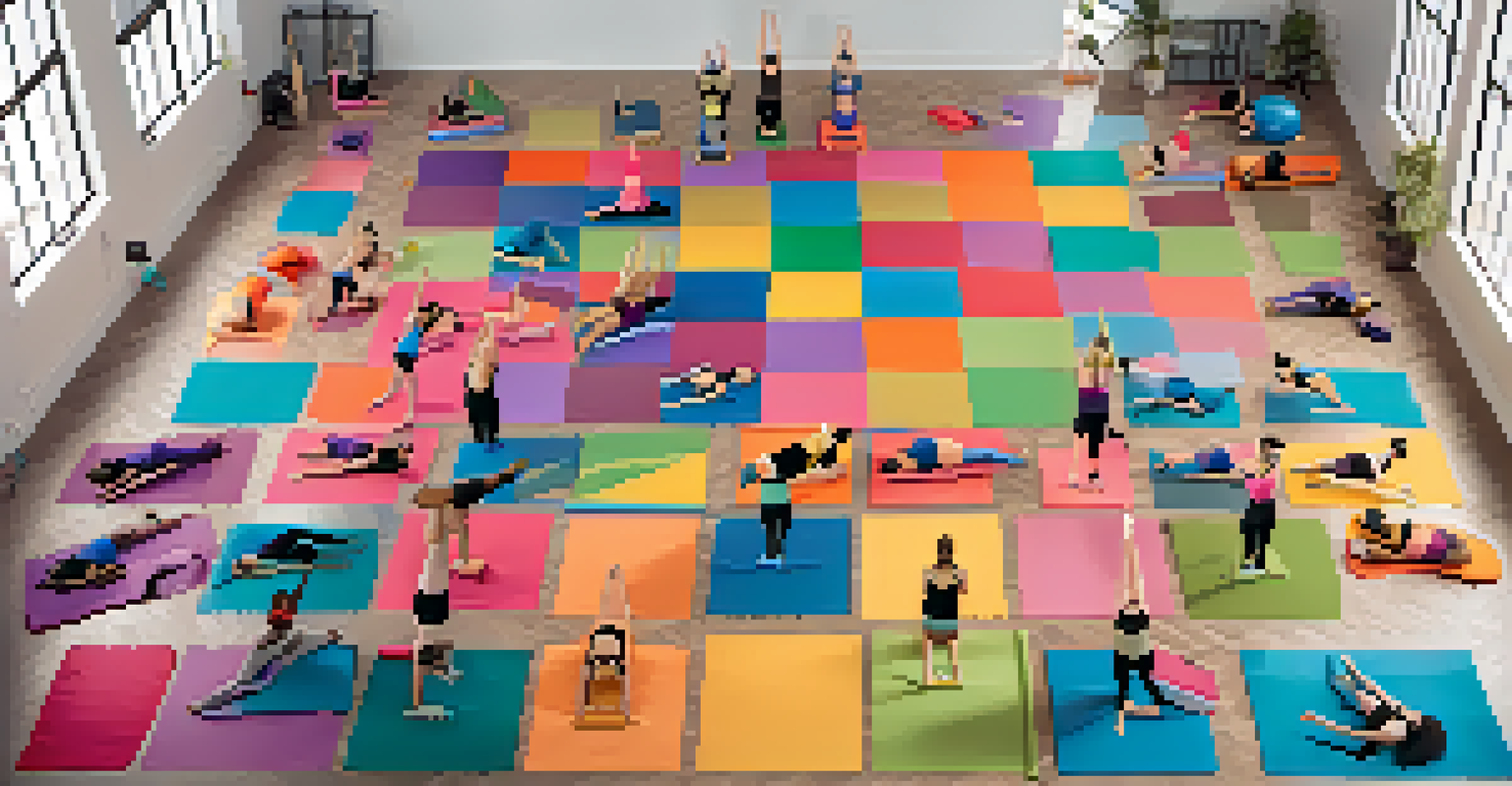Exploring Pilates: Strength and Flexibility in One Workout

What is Pilates and How Does it Work?
Pilates is a low-impact exercise method that focuses on strength, flexibility, and body awareness. Developed by Joseph Pilates in the early 20th century, this practice combines elements of yoga, dance, and calisthenics. At its core, Pilates emphasizes controlled movements and proper alignment, which helps to build a strong foundation for overall fitness.
Physical fitness is not only one of the most important keys to a healthy body, it is the basis of dynamic and creative intellectual activity.
The workouts typically involve a series of exercises performed on a mat or specialized equipment like the reformer. Each movement is designed to engage your core, improve posture, and enhance flexibility. The beauty of Pilates lies in its adaptability; whether you’re a seasoned athlete or a complete beginner, there's a level that suits everyone.
Moreover, Pilates not only tones your muscles but also fosters a mind-body connection. This connection encourages mindfulness during your workout, allowing you to focus on your breathing, alignment, and the subtle nuances of each movement.
Benefits of Combining Strength and Flexibility
One of the standout features of Pilates is its dual focus on strength and flexibility. Many traditional workouts prioritize one over the other, but Pilates harmoniously blends both, making it especially effective. Strong muscles support your joints, reducing the risk of injury, while increased flexibility enhances your range of motion in daily activities.

For instance, think about the last time you reached for something on a high shelf. If your muscles are strong but inflexible, you might strain yourself. Pilates trains your body to be both strong and flexible, ensuring that even those everyday movements feel effortless.
Pilates Enhances Strength and Flexibility
Pilates uniquely combines strength training and flexibility, making it effective for injury prevention and overall fitness.
Additionally, this combination can lead to improved athletic performance. Whether you’re running, swimming, or playing a sport, having a balanced body can enhance your overall efficiency and power, allowing you to excel in your chosen activities.
Pilates: A Full-Body Workout Experience
Pilates is often misunderstood as merely an ab workout, but it actually engages your entire body. From your arms and legs to your back and core, each session targets multiple muscle groups, providing a comprehensive workout. The emphasis on core strength is particularly beneficial as it forms the foundation for nearly all physical activities.
The mind is everything. What you think you become.
Imagine your body as a house; your core serves as the strong foundation that keeps everything else stable. Just as a house needs a solid base to stand tall, your body requires core strength to maintain proper posture and alignment during movement.
This full-body approach not only builds strength but also promotes better coordination and balance. As you progress, you'll find that everyday tasks become easier and your body feels more agile.
Pilates for Injury Prevention and Rehabilitation
Pilates is widely recognized for its therapeutic benefits, making it a popular choice for injury prevention and rehabilitation. The controlled movements and emphasis on alignment help to strengthen weak muscles and stretch tight ones, creating a balanced body. This balance is crucial in preventing injuries that often arise from muscle imbalances or poor posture.
For example, athletes recovering from injuries often turn to Pilates as part of their rehab program. The gentleness of the exercises allows them to rebuild strength without putting excessive strain on their bodies. Plus, the focus on proper mechanics reinforces good habits that can help prevent re-injury.
A Full-Body Workout Experience
Unlike common misconceptions, Pilates engages the entire body, focusing on core strength while also improving coordination and balance.
Even those without injuries can benefit from this preventive approach. By incorporating Pilates into your routine, you can develop a stronger, more resilient body that’s better equipped to handle the demands of daily life.
Pilates: Suitable for All Fitness Levels
One of the most appealing aspects of Pilates is that it caters to all fitness levels. Whether you're a complete novice or a seasoned fitness enthusiast, there’s something for everyone. Classes are often structured to accommodate various skill levels, ensuring that everyone can participate and progress at their own pace.
For beginners, Pilates offers a gentle introduction to body awareness and strength training. The focus on alignment and controlled movement helps newcomers learn the basics without feeling overwhelmed. As you grow more comfortable, you can gradually increase the intensity and complexity of your workouts.
For seasoned practitioners, Pilates provides opportunities to refine techniques and explore advanced movements. This adaptability keeps the workouts fresh and challenging, encouraging continuous improvement and engagement.
Creating a Balanced Pilates Routine
To reap the full benefits of Pilates, it’s essential to create a balanced routine that incorporates both strength and flexibility elements. A well-rounded practice might include a variety of exercises targeting different muscle groups while also incorporating stretches to enhance flexibility. This balance ensures that all aspects of fitness are addressed.
For instance, you might start your routine with strength-building exercises like the Hundred or Plank, followed by flexibility-focused stretches such as the Spine Stretch. This combination allows you to warm up your muscles, build strength, and then lengthen them for optimal performance.
Accessible for All Fitness Levels
Pilates is adaptable for everyone, offering suitable options for beginners and advanced practitioners alike to progress at their own pace.
Additionally, consider incorporating breathing techniques to enhance your practice further. Focusing on your breath not only improves oxygen flow but also helps with concentration and mindfulness, creating a more fulfilling workout experience.
Finding the Right Pilates Class for You
With the popularity of Pilates on the rise, there are countless classes available, making it essential to find the right one for your needs. Consider factors such as the style of Pilates (mat vs. reformer), the instructor's experience, and class size. These elements can significantly impact your experience and progress.
For beginners, it's often beneficial to start with a mat class, where the focus is on foundational movements. Once you feel comfortable, you might explore reformer classes that utilize specialized equipment to add variety and resistance to your workouts. This can help deepen your practice and provide new challenges.

Don’t hesitate to try a few different classes or instructors to see what resonates with you. The right environment and teaching style can make all the difference in your Pilates journey, ensuring you stay motivated and engaged.